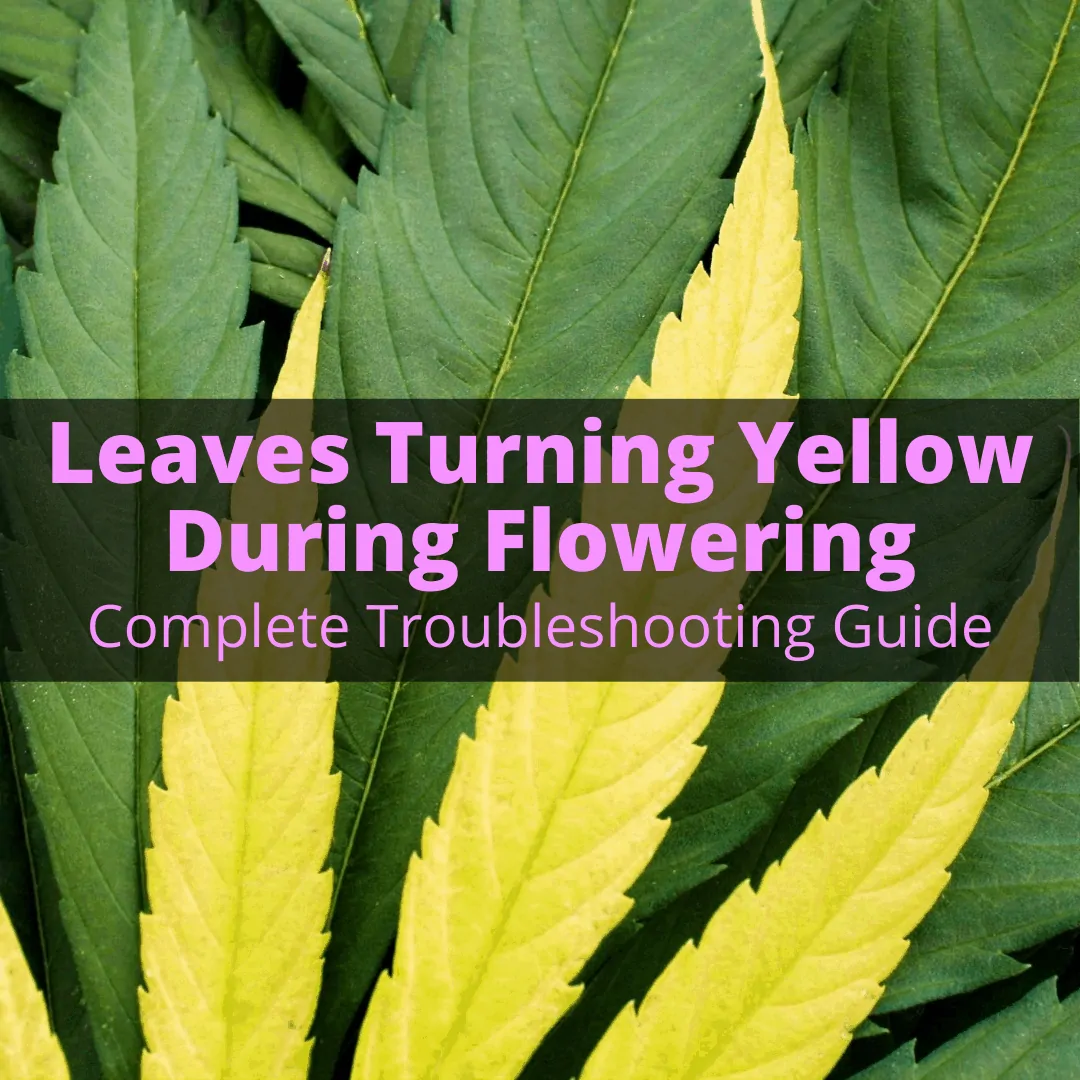 You might have a serious problem.
You might have a serious problem.
If your cannabis plants have leaves turning yellow during flowering, they could be sending you a warning.
The good news is: most likely it is nothing to worry about, though.
If the leaves are turning yellow during the final weeks of flowering, this is perfectly natural. Your plants are simply diverting resources to bud growth and letting the leaves die off. This is a good thing.
But if the yellowing occurs early in flowering (or even during vegging), it is probably something serious.
And it could be a number of vastly different problems. That is why it is important to figure out exactly what the issue is, before you can fix it.
This guide will help. We’ll begin by giving you the most common causes of yellowing marijuana leaves. Then we’ll go through a step by step troubleshooting guide to help you rule out one possible cause after another. Let’s get started!
Contents
Leaves Turning Yellow During Flowering
Leaves turn yellow due to a loss of chlorophyll, which is known as chlorosis. As mentioned, if chlorosis happens early in flowering, or even during vegging, it could indicate a serious problem. Read on to find out what might be causing the issue and how to fix it.
However, if the leaves are turning yellow toward the end of flowering, this is called senescence. Senescence refers to the natural yellowing and dying off of plants.
Toward the end of its life cycle, the marijuana plant diverts all of its resources toward bud growth to maximize yield (how convenient for us!), letting its leaves die off.
If you flush the soil or other growing medium to get rid on any residual nutrients before harvesting, this will further cause yellowing. Many growers also withhold water before harvest. Read When To Stop Watering Before Harvest for more. We also have an article that discusses flushing vs not flushing.
The type of yellowing you get toward the end of flowering just before harvest time is not an issue. If this is what you have, you can safely stop reading at this point and get ready for a great harvest
Possible Causes Of Chlorosis
As mentioned, there are quite a few possible causes of chlorosis. Let’s take a look at the most common ones, before going through a troubleshooting guide to help you figure out what might be causing your weed plants to turn yellow.
Light Burn
Yellowing leaves can be caused by light burn. This simply means that the grow lights are too powerful and are burning the leaves, causing them to turn yellow.
Obviously, this will effect the leaves closest to the lights the most, so you can easily tell when the yellowing is most likely due to light burn. The leaves are also difficult to pull off the plant, even if they are already dead.
To alleviate the situation, simply hang the lights higher, or dim them, if you have dimmable grow lights.
Insufficient Light
Conversely, not enough light can also cause yellowing of the leaves. I know, it’s confusing, right? The good news is that leaves will only be yellow from not getting enough light early in a plant’s life. If they change color during flowering, insufficient light is not the problem, so you can safely cross this one off your list.
Over-Watering
Over-watering is a common problem. And it can actually mean several things. It can mean that you are giving too much water at one time, or that you are giving the right amount, but watering to frequently.
You could also be doing everything right, but your pot does not have good drainage (due to poor soil or a pot with inadequate drainage), causing moisture to remain in the pot.
The symptoms from over-watering can resemble those from a nutrient deficiency, but there are some things to look out for, to help you tell the difference. For one, the plants might look a little droopy and the leaves can appear swollen, since they are full of water.
Do the plants droop (or droop even more) immediately after watering? Then they are almost certainly getting too much water.
Fixing this issue is relatively straightforward: simply give your plants less water. But you need to make sure the issue is not due to poor drainage, and you also need to know if you are giving too much water at one time, or watering too frequently.
Make sure you use good soil or coco coir. If you just use random soil you got from outside somewhere, it may not drain well (it may also be infested with pests, so just buy good potting soil). If water takes forever to come out the bottom of the pot when watering, it is likely a drainage issue.
When watering, you want about 10 to 20% of the water you give to run out of the bottom of the pot. That is when you’ve provided enough. Remove this water after watering. Do not simply let it sit in the tray.
To know how often to water, stick a finger in the top of the soil, about a knuckle deep. If it feels dry, it is time to water. For coco coir, water every 1 to 2 days.
Smart pots are a great way to prevent over-watering. But no matter the pot, using one that is the right size helps a lot too. A pot that is too small makes it easy to over-water. A pot that is too large, can lead to the opposite problem.
Under-Watering
Under-watering is much less common than over-watering, but it can still happen, especially if your pot is too large for the plant. Leaves will be thin, since they lack water. If your plant looks droopy, but it perks up right after watering, it is likely not getting enough water.
Nutrient Deficiency
A deficiency in several nutrients can cause yellow leaves. Conversely, so can an excess of some nutrients, but this is much less common. We’ll cover the most common deficiencies here, but you can check our chart of nutrient deficiencies in marijuana to see which other ones could cause leaves to lighten.
Nitrogen
The most common culprit is nitrogen. With a nitrogen deficiency, you will notice the lower leaves yellowing during flowering (the older ones toward the bottom of the plant). These leaves are easy to pull off and actually fall off on their own most of the time. Plants will also look pale or lime green.
A nitrogen deficiency does not necessarily mean you are not providing the plant enough nitrogen. It could also be a pH imbalance that is blocking nitrogen absorption. The best water for weed plants has a pH within a specific range (see below).
If you are providing the recommended amount of nutrients, a nitrogen deficiency is unlikely. Most soils already contain nitrogen, but once that is used up, you will need to supplement. Coco coir does not contain nitrogen, so you will need to provide it from the beginning.
Too much nitrogen can also cause leaves to turn yellow, but the remaining leaves will look dark green, instead of lime green or pale.
Magnesium
A magnesium deficiency causes a different kind of yellowing. Instead of the entire leaf changing color, the veins stay green and only the parts in between the veins turn yellow.
But if you see these symptoms only on lower leaves that are not getting any light (or very little) and that also look limp or droopy, then this is not a deficiency. Plants divert resources away from leaves that don’t get any light, so as long as the leaves that are getting light look fine, your plant is getting enough magnesium.
If it is not getting enough, it is most likely a pH issue, and not a result of you not providing enough magnesium, since most water contains this mineral. But it you are using filtered water, your plant may not be getting enough.
Check the pH first, before adding more magnesium (generally via a CalMag supplement). You want to make sure you do not add a cal mag supplement, unless you are actually facing a calcium or magnesium deficiency. Or both.
Iron
If you plants are not getting enough iron, it is the newest leaves that are yellow, not the older leaves. This makes it fairly easy to diagnose this issue. The leaves actually start out yellow, then begin turning green, from the outside edges inward.
It is highly unlikely that your plant is not receiving enough iron. Cannabis needs very little and most water contains enough.
You will only need to supplement iron (also using a CalMag supplement, which all contain iron as well), if you are using completely pure water (reverse osmosis, for example). In most cases, an iron deficiency results from an incorrect pH.
pH Imbalance
In the end, an incorrect pH in the root area is the most common reason for yellowing leaves. When the pH is not within the correct range, cannabis roots are not able to absorb certain nutrients, which leads to a deficiency. While a lack of a certain nutrient is the direct cause of the yellow leaves, it is the pH imbalance that is the root cause.
The ideal pH for marijuana plants growing in soil is 6.8. For weed plants growing in water (hydroponics) or other soil-less media, the ideal pH is 5.8. Use a pH meter to test the pH of runoff water (this works better than using a soil meter to test the soil itself).
If the pH is incorrect, you’ll want to flush the root area with neutral water. Then give the plant water with the correct pH. You can adjust it using pH up/down solutions.
Incorrect Temperature
We already mentioned the possibility of your grow lights causing light burn if they are too close to the plants, and thus too hot. But even if the lights are not directly the problem, an ambient temperature in the grow room that is too high or too low can also cause leaves to turn yellowish.
You want to make sure the temperature stays between 60° F and 85° F. It will be lower at night, but should never drop below 60°. It should never go above 85° during the day.
Use fans, ventilation ducting, air conditioning units, grow lights and heaters to regulate the temperature. You won’t need all of those things, of course.
In mini grow tents, you often don’t need anything more than your grow light and a regular fan. In big grow tents, you’ll probably need more heating and/or cooling equipment.
Pests
An infestation of pests can also cause yellow leaves. Even if you have a completely sealed grow tent, you can track in pests on your shoes or clothing, or there could already be eggs on a clone you bring inside.
Poor conditions in your grow space make your plants an easier target, so ensuring you keep your room clean and you don’t over-water can go a long way to reducing the chance of an infestation taking hold.
To check if an infestation of pests is the cause of your discolored leaves, inspect your plants carefully to see if you detect any bugs crawling around.
If you do, identify the pest and look up how best to get rid of it. This is not always an easy thing to do, unfortunately.
But some, like aphids, are easier to get rid of. This article shows you how to get rid of aphids during flowering.
Bud Rot
Bud rot thrives at cooler temperatures of around 60° to 70° F, with a relative humidity over 60%. If you see gray or brown mold growing inside the cola at the base of any yellow leaves, you have bud rot.
The yellow leaves are usually the first sign you’ll see. They will change color quickly, often overnight, and fall out easily. Once bud rot has taken hold, there is not much you can do. So do your best to prevent it.
The same goes for powdery mildew, which is basically a type of bud rot. Once your plants are affected, it is almost impossible to remove successfully, no matter how much you spray your buds against powdery mildew.
The key is good circulation. Ensure that buds get plenty of fresh air. Remove larger leaves on bushy plants to improve air flow with a pair of trimming shears, especially toward the end of flowering. Try to keep humidity under 50% during flowering and the overnight temperatures above 65° F.
Troubleshooting Yellow Cannabis Leaves
The most likely cause of yellowing leaves is a nutrient deficiency or light burn. But when troubleshooting, it does not make sense to begin with a nutrient deficiency, because it is more difficult to rule out than some other potential causes. Instead, we want to begin by ruling out the ones that are easiest to rule out.
Step 1: Ensure Correct Temperature
Temperature is definitely not the most likely cause, but it is the easiest to check, so we recommend starting here. Make sure that the temperature in your grow area stays above 60° F at night and below 85° F during the day.
Step 2: Ensure Correct Amount Of Water
This is another fairly easy thing to verify. Go back to the section above on over- and under-watering and see if that could be the case for you. If not, move on to the next step.
Step 3: Check Lights
Here you just want to make sure that the lights are not burning the plants. Check for the signs of light burn mentioned above in the section on this issue.
You can also do the “hand check”. Simply hold your hand by the top of the canopy, with the back of your hand facing the grow lights. Leave it there for a minute or so.
If the light begins to get too hot on the back of your hand, it is going to be too hot for your plants as well. Hang the lights higher and see if that resolves the yellowing. If not, move on to the next step.
Step 4: Check For Pests
This is another simple check. Inspect affected plants carefully to see if there are any pests crawling around on them. If so, they are the likely culprit and you need to take steps to eliminate them. If not, move on to the next step.
Step 5: Check pH Levels
With everything else ruled out, the issue is most likely a problem of insufficient nutrients, or perhaps too many nutrients. Most of the time, a nutrient deficiency is actually caused by an incorrect pH that is blocking the absorption of that nutrient, instead of you not providing enough nutrients.
The best way to check the pH level of the root area is to test the pH of the water runoff as described in the section on pH imbalance above. If the pH is off, adjust it as described in that same section.
If the pH is good, then you are probably not providing your plant enough of a certain nutrient. Or you may be giving it too much.
Step 6: Check For Nutrient Deficiency Or Excess
The key is to figure out exactly which nutrient is causing the issue. For yellow leaves, it is usually nitrogen, magnesium or iron.
The section on nutrient deficiencies above will help you diagnose which nutrient is deficient. Once you have that figured out, take the appropriate steps to rectify the problem. Trimming off the lower branches can often help, because it frees up resources for the remaining leaves.
Yellowing Leaves During Bloom: Final Thoughts
Yellow leaves are not always a problem. In fact, most of the time, they are nothing to worry about. But other times, they can indicate something serious.
The first step is to determine which of these is the case for your plant. If you have unusual yellowing early in the flowering stage, you probably have a more serious problem that needs to be fixed in order to get a good harvest. Use the troubleshooting steps to figure out the issue and remedy it.
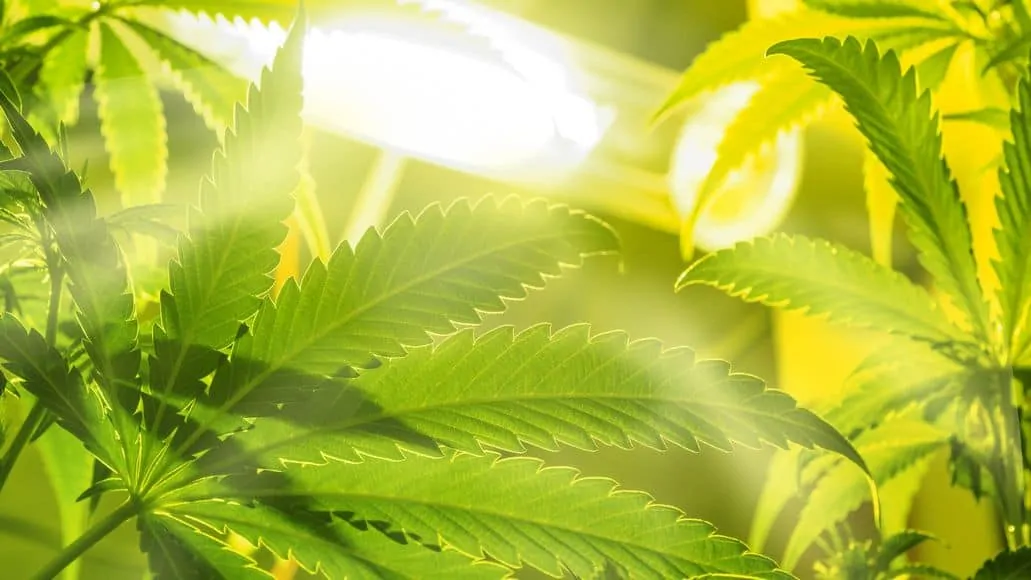
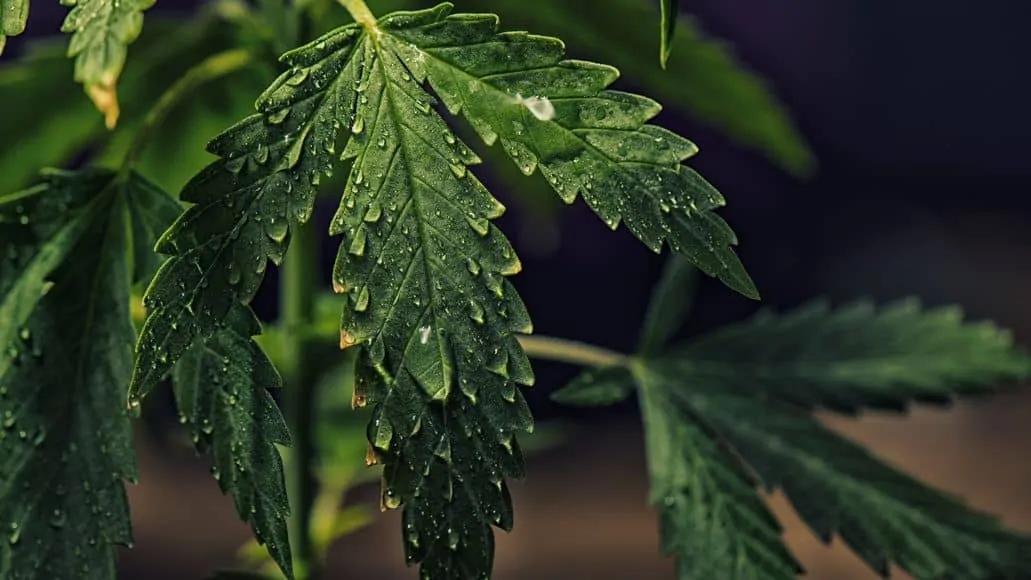
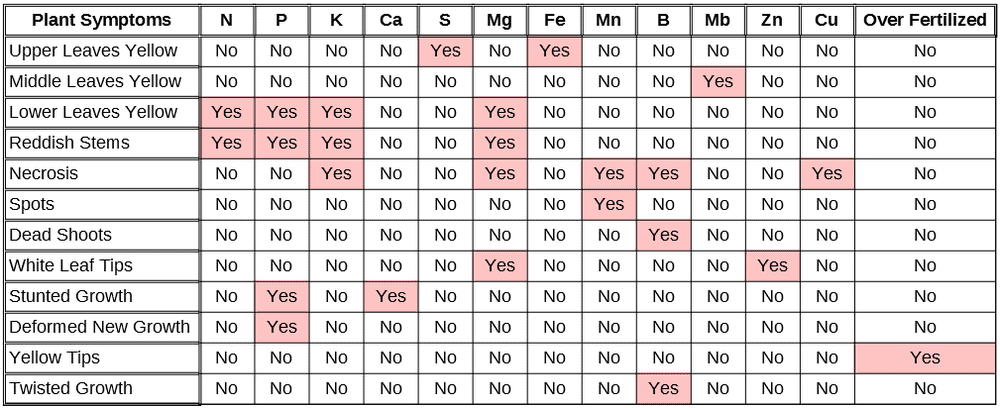

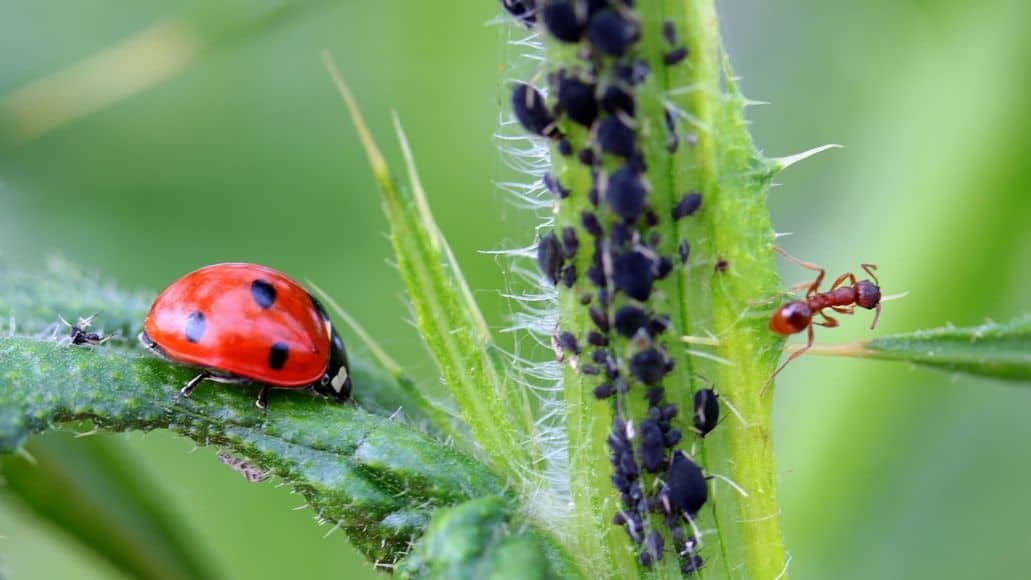
Ottorino says
Grazie.
Violet Ball-lee says
This is a great help I’m going to go over the contents and figure what’s going on with my baby it was during fine up until 4 days ago by the way I’m a beginner and I’m 73 years old
Granny
X says
Use urea for nitrogen source, feed according to plant size. Murite of potassium. Triple super phosphate. NPK. Bone meal will provide calcium. Oh and peat moss will lower P H. Of soil.
OGSTONER says
Hello 60yr old male started growing about 1yr ago. It would help too know where are you at in your growing the stage would help with a little more I fo to go on.
Thanks
Violet Ball-lee says
It’s between my ph and nitrogen
This is great knowledge to know
I’m going to by some flush tomorrow
Granny
Devin says
I’m a beginner grower and my plant is about 5 weeks into flowering. The lower bigger fan leafs are starting to turn light geen. Is this normal?
Dobby says
Yep normal as, putting energy into the buds
Steve says
Hi everyone its my first grow and i testing all my stuff so I’ve decided to do a quick grow. After 6 weeks I’ve turned to 12/12 and on day 2 im seeing the centre of all heads getting a yellow colour. Is this normal?
Matt says
No. This is not normal 2 days into flower. Not sure what you mean by heads. Buds will form at the nodes & on day 2 there will be no bud formation beyond bracts & pistils (the little hairs). Maybe you mean the new growth? this is also key. Is the yellowing taking place at new growth? Old growth? All over the plant? Can’t diagnose what the problem is but don’t change too many things at once or you won’t know what works. First, make sure you are not watering too much if you are in soil. This is the BIGGEST mistake with new growers. If hydro, it is most probably a nutrient or pH problem. Hope this helps.
Albert mezher says
No it’s a nute deficiency. U have to make sure u use cal mag all during veg and I use it in flower too. Everytime I feed
Outdoor guy says
I’m about 3 weeks onto flowering ( outdoors) buds looking great so far however the the plant as a whole has seemed to lighten up (a light lime green) I see nothing that is causing this is this normal. They are indica gdp fem.
Outdoor guy says
Outdoor grow…….it’s about week of flowering and plant seems to be doing well overall, however I’m detecting a change in color from the darker green to a limish color green on the outer leaves. I’m maybe being paranoid however if this is a sign of a problem starting what’s the best solution. Keep in mind I’m flying blind as far as knowing the pH levels and all that. Basically been letting mother nature take her course and it been great . Any thoughts??? Thank you
Outdoor guy says
Previous post was supposed to say 3 weeks into flowering
Siustewie says
Yes me too. But I have found that this is normal. It’s diverting It’s energy to budding. Keeping adding nutrients at your schedule and remember to do ph test. And flush out to keep circulation fresh.
andrea says
The yellowing, in every moment, is lack of Nitrogen, 99% of the times caused by OVER Fert of POTASSIUM. That actually block N absorbing. It’s a imbalance in the soill. You could fix transplant it or a week of water and then some calcium source, even calcio nitrate, that try to fix the problem.
Also, It’s not normal that plants leaves yellowing at the end of bloom. Not normal at all. Why it should be normal? It’s ‘normal’ if u stopped to give food to the plant, not in every case. Yellowing is always a big problem.
Also, pests or light or other disease have no link with chlorosis.
YELLOWING HALF BLOOM: 99% Over K (SO N LACK) 1% Lack of N (SO THERE ISNT’ N)
Haywired says
I agree with Andrea.
Charlie Hutchings says
You solved my problem 100% correct!
Charlie Hutchings says
I agree with Andrea.
Tatit says
Hi got indoor plant too and about 3months on flowerinf stage and pruning fan leaves then suddenly my plant turns into yellow. Some dry leaves but i watering it everyday on the 12/12 lighting. What should you advice or is there something wrong on my procedure? Thanks
MT says
Never water everyday….water very thoroughly and wait until your soil is dry and the pot is light before watering again. U can’t schedule waterings…..it needs to be done when the plant needs it. Watering daily is a recipe for root rot and whole host of other problems.
Anonymous says
Two things you say your three months into flowering. It should be time for those plants to be finished. Yellowing of the leaves is normal in the final stages of flowering.
It also sounds like you are watering to frequently. Watering too much is a frequent problem.
Steve says
My plants are 2 weeks into the flower stage and some of the leaves are turning yellow. I have been taking my banana peels and soaking them in a gallon container and then watering the plants with it. Could this be too much potassium causing the yellowing of my leaves.? I usually do this ( on average) once every 2 weeks. One gallon water with new peelings ( about 5-6 banana peelings) on 4 plants every 2 weeks.
Jan Kokes says
Excellent. Two notices:
I find the finger method of testing for dampness unreliable. Instead, pick them up and feel their weight.
In the deficiency chart you likely meant Mo, not Mb. There is no such thing as Mb.
Kman says
You can water plants everyday and on a schedule. How do you think commercial growers do it? Do you think they run around and check 2000 plants each day? No. After about 4 weeks I water my four (outdoor) plants each day, twice a day using a watering timer. 6am and 6pm for two minutes each time. Its perfect. Soil is never dry or too wet. I also feed on a schedule. Every Sunday. On that day I shut off the timer and water/feed from water cans. Has always worked for me. Common sense would indicate consistency may be better for the overall growth of the plants rather than waiting till its starving for water before giving it any. This whole better to underwater than overwater is BS. Both are bad, period. Root rot only happens if you have poor drainage so be sure pots are draining well or use grow bags. All too often the majority are wrong, so form your own opinion and try things out, you’ll be surprised what works and what doesn’t.
Phil says
So bought a plastic green house, didn’t know at the time there were different shades of green house, mine is green apparently only 80% of day light gets thru?
Started my plants from seeds, all great 5 weeks in I moved them from house to green house, all fine but after two weeks bugs started to eat my plants bought a natural bug spray it seem to help.
After a week or so notice leaves were turning yellow with brown edges.
Took some samples to the local nursery and it was suggested not enough sun or soil was the problem.
I replanted them with new soil pro mix and washed the containers they were in incase. replanted and set them outside the greenhouse, but even today they have not recovered from what ever the problem was. In fact one plant went from dark green to very light light green., they all continued to grow and some are flowering but very sickly out of 7 plants 2 look like they will produce ,the other 5 very iffy.
I have been watching ph also around 6.5 to 7.
The other confusing part my neighbor bought clones , we purchased the green house together, and theirs have no problem dark green and growing inside the green house.
Any questions or suggestion would be appreciated, at this point I have wasted 3-4 months, as I feel they will not succeed in the end, wish I could add photos.
Anonymous says
Tried to grow organically as much as possible. Only sprayed neem oil twice before pre-flower stage. Plants are outside and I got nervous when the leaves on one plant started turning yellow then dying. 6 weeks into flowering and found thrip larva on buds. Found a spider mite on a fan leaf so there have to be more. And some kind of black bug that looks like a flea just appeared on the buds also. One plant is beyond hope but a couple others still look pretty healthy. I estimate the flowers need a couple more weeks at least to mature but the bugs will continue to get worse. If I remove the fan leaves and hang the plant to dry early will the bugs continue to eat the buds or will they die and fall off? Or is there something I can do to eliminate the bugs so the flowers can continue to ripen?
Fiba says
Hi some of my leaf turning yellow 5 weeks in flowering is this normal
Carol McElheney says
I have six plants outside in pots, which are about 4 feet tall and starting to bloom. All are also getting a few yellow leaves that are solid yellow and come off easily, from all over the plant. My last crop didn’t do this, but it was just a mutt crop grown from random seed. This one is “Limoncello” strain.